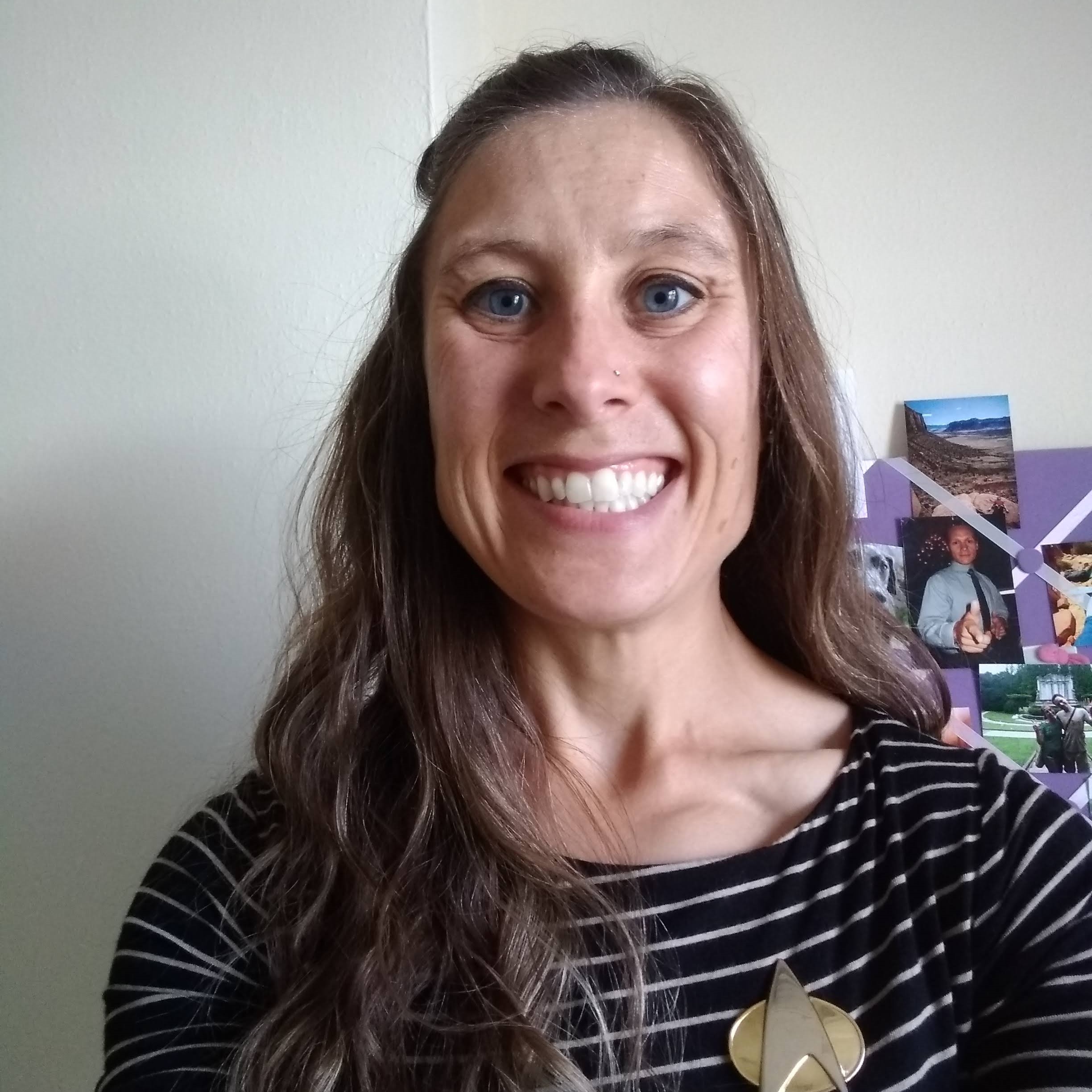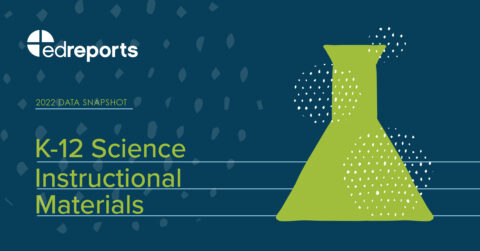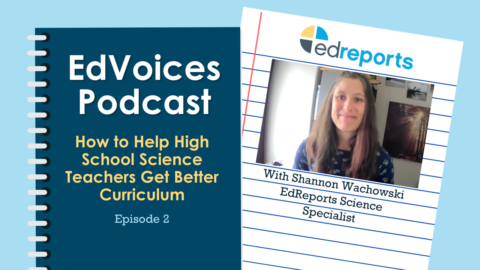Let High School Science Teachers Know They’re Not Alone
Educator Shannon Wachowski discusses the challenges high school science teachers are facing and how EdReports’ reviews of high school science programs can support them.
I was a high school science teacher for 13 years, based in rural Colorado where I was often the only teacher in my content area. Like so many others in my profession, I was also working hard to adjust and improve my own practice. It was important to me that students were fully immersed in the science learning that’s reflected in the “K–12 Framework for Science Education” (Framework) and the Next Generation Science Standards (NGSS).
On my own, I often struggled to find the instructional materials and resources necessary to do my best work in the classroom. My school didn’t have comprehensive high school science instructional materials, opportunities for meaningful professional development, or even a network of peers to learn from. Like the vast majority of high school science educators across the country seeking out resources to support their students, I often felt alone and without a consistent place to turn to for support.
The absence of quality high school science materials
In the past few years, the country has seen dramatic improvement in curriculum quality in mathematics and English language arts. And while roughly 50% of states have adopted science standards connected to the Framework, the transition to better materials has been slow going.
In the last decade, educators have been calling for high-quality science instructional materials that support students to gain the knowledge and skills they need to be college and career-ready. Many high school science programs claim alignment to the Framework and NGSS, yet until now there have been no independent reviews of those materials to validate those claims. For teachers seeking out resources to support their classrooms, there have been few ways for us to know if the programs we were using were high quality and could encourage students to truly engage in science rather than just learn about it.
To make matters worse, 28% of high school teachers report receiving no professional learning related to instructional materials with an additional 36% receiving only one to five hours. A third of those who do receive professional learning indicate that it does not prepare them at all to use their provided curriculum.
No one wins when teachers are forced to create their own materials
Because of the challenges I faced as a teacher, creating my own curriculum became integral to my identity as an educator. I took pride in what I designed, of course, but I also did so because I could not see an alternate way of supporting my students. Again, I wasn’t alone in this. On average, teachers are spending 7–12 hours a week searching for and developing materials. We often turn to supplemental programs, create resources from scratch, or choose from a variety of options off the internet. This is especially the case in high school classrooms: 63% of high school teachers are using supplemental programs as their primary materials, and 96% of teachers are using resources from Google with 75% sourcing from Pinterest.
While there is nothing inherently wrong with supplementing, adapting, or creating your own resources—these practices are essential to meeting the individual needs of students—they should be additive, and not your primary curriculum.
What I came to learn over time is that relying on piecemeal resources of varying (often times very poor) quality could never give me the support I actually needed to implement my state’s science standards or provide students with cohesive, engaging science learning.
Even if I created great content for a single class, this was far from materials that are designed to build and develop skills within a specific scope and sequence. Comprehensive programs can provide that crucial coherence, not only within a single grade band, but if selected intentionally, can build on one another throughout the high school years.
In addition, it’s important to consider the impact on teachers. Expecting teachers to be their own curriculum developers is simply unfair and counterproductive. We aren’t trained to do this, and we also do not have the time or capacity.
Certainly we should be involved in selection decisions and have a real voice because we know our students best. But I can think of so many better things to devote those 12 hours a week to than scouring the internet. At the top of my list? Making content come alive and ensuring each and every student is able to learn and grow.
3 Ways EdReports Reviews of High School Science Courses Can Support Educators
How can we begin to address some of these challenges and provide teachers with the supports they deserve? EdReports released reviews of high school science programs in June 2023 and hopes that they will shed light on what has been a black box up until now. Explore the opportunities below and consider how to integrate them into your next adoption of high-quality materials.
- Boost your materials adoption process with a wealth of independent, educator-provided information about product content and usability
Our new science reports offer invaluable information to support the selection of new science materials. These reviews are the result of hundreds of educator hours analyzing every page, calibrating all findings, and reaching a unified conclusion about science courses. They offer in-depth program details for districts to begin to better understand and winnow choices.
The majority of high school teachers are choosing programs on their own, but these reviews can support an inclusive adoption process with multiple stakeholders and teachers. Districts should invest the time, energy, and resources to develop an instructional vision and identify local priorities so that student needs can act as a guide when using our reviews or review tools to look deeper into different programs. - Help educators get informed so they can better advocate for what they need
The availability of independent information about high school science courses means that educators have additional evidence to advocate for what they need. Understanding the strengths and gaps in products allow us to ask: What do we want to see in science materials and in the field? What are components that are essential to meeting the demands of the Framework and NGSS? With this information in hand, educators can push publishers to create (and districts to select) the quality courses that allow students to engage in transformative three dimensional science learning. - Ensure teachers have high-quality, coherent materials so they’re not forced to create their own
Instructional materials will not solve every challenge teachers and students face. But we know when teachers have access to high-quality, aligned programs, they have more time to do what they do best: inspire a lifelong love of science and differentiate for students at all levels of learning. Including EdReports reviews as part of a holistic smart adoption process is a commitment to educators that they are not on their own and will always have the tools for success.
Related Resources




